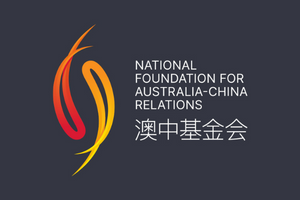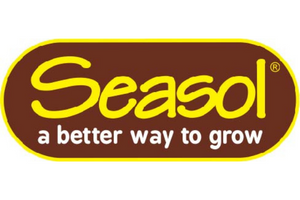The program below is provisional and will be updated as planning proceeds. Please check this page regularly.
Program
Sunday, 19th February 2023
| PRE-SYMPOSIUM WORKSHOPS | ||
| Workshop One IMAS, 20 Castray Esplanade, Battery Point |
||
| 0900 – 1600 | Charting a global agenda for kelp restoration View further details here. This workshop is available in person and online. |
|
| Workshop Two IMAS, 20 Castray Esplanade, Battery Point |
||
| 1300 – 1600 | Towards a strategy for a global effort to address fundamental gaps in seaweed taxonomic knowledge View further details here. This workshop is available in person and online. |
|
| TOURS | ||
| CSIRO Australian National Algae Culture Collection Tours CSIRO, Castray Esplanade, Battery Point |
||
| Three tours of 35 – 40 minutes will take place at the following times:
2 – 2.40 pm Attendees will visit the CSIRO Australian National Algae Culture Collection. The algae collection is a unique resource of Australian biodiversity, containing living cultures of marine and freshwater species from most microalgal classes. Our strains have been sourced from tropical Australia to Antarctica. View further details here. |
||
| 1500 – 1900 | Registration Open | Federation Ballroom Foyer | |
|
WELCOME RECEPTION |
||
| 1700 – 1900 |  WELCOME RECEPTION WELCOME RECEPTIONFederation Ballroom, Hotel Grand Chancellor Hobart This is the first opportunity for all delegates to come together. |
|
Monday, 20th February 2023
| 0730 | Registration Open | Federation Ballroom Foyer |
| 0900 – 1030 PLENARY SESSION #1 | |
| Federation Concert Hall | |
| Please be in the room by 8:55am. Doors will be locked and no entry will be permitted once Her Excellency, the Governor of Tasmania, has entered the room. | |
| Chairs: | Catriona Hurd Michael Borowitzka |
| 0900-0930 | Welcome & Opening Ceremony
Welcome to Country | Alison Overeem Official Opening | Her Excellency the Honourable Barbara Baker AC, Governor of Tasmania Welcome | Professor Rufus Black, Vice Chancellor, University of Tasmania Welcome by ISA President | Daniel Robledo Welcome by 2023 ISS Co-Chairs | Professor Catriona Hurd & Professor Michael Borowitzka |
| 0930 – 1000 | William Henry Harvey and his Australian Seaweeds John Huisman Western Australian Herbarium, Australia |
| 1000 – 1030 | Rimurimu – Seaweeds of Aotearoa New Zealand – the journey of discovery continues… Wendy Nelson University of Auckland, New Zealand |
| 1030 – 1100 | MORNING TEA & EXHIBITION – Federation Ballroom |
| 1100 – 1230 PLENARY SESSION #2 | |
| Federation Concert Hall | |
| Chairs | Wei Zhang Alejandro Buschmann |
| 1100 – 1130 | Future proofing kelp forests Melinda Coleman NSW Department of Primary Industries, Australia |
| 1130 – 1200 | Contributing to the seaweed revolution: An overview of the cultivated red seaweed market, its challenges and vision to support the development of a sustainable supply chain – the case of Nosy Boraha Seaweed – Sainte Marie / Madagascar Sébastien Jan Director East Coast, Ocean Farmers |
| 1200 – 1230 | Commercialising seaweed extracts Helen Fitton Director, RDadvisor |
| 1230 – 1330 | LUNCH & EXHIBTION – Federation Ballroom
POSTER VIEWING SESSION – Theme 1A. Phycolloids and Bioactives |
Tuesday, 21st February 2023
| 0800 | Registration Open | Federation Ballroom Foyer |
| 0830 – 1030 PLENARY SESSION #3 | |
| Federation Concert Hall | |
| Chairs: | Thomas Wernberg Catriona Hurd |
| 0830 – 0900 | Macroalgae, blue carbon and nature-based solutions Dorte Krause-Jensen AARHUS University, Denmark |
| 0900 – 0930 | Supporting community-led restoration of kelp forest ecosystems and associated fisheries Chris Hepburn University of Otago, New Zealand    |
| 0930 – 1000 | Asparagopsis exposé: 50-odd years of unique science and marketing Nick Paul University of the Sunshine Coast, Australia |
| 1000 – 1030 | Technology gaps, innovation opportunities and new markets for a productive and scalable eucheumatoid seaweed industry – Insights from Hatch’s global seaweed report Karlotta Rieve Hatch Blue |
| 1030 – 1100 | MORNING TEA & EXHIBITION – Federation Ballroom |
| 1730 | AUSTRALIAN SUSTAINABLE SEAWEED ALLIANCE SEAWEED INNOVATION SHOWCASE AND NETWORKING EVENT – Harbour View 1 Click here to book your ticket! |
| 1730 | EARLY CAREER RESEARCH (POSTDOCTORAL) FUNCTION – Grand Ballroom 1 The Early Career Function is available for delegates who are up to 7 years post PHD. Attendees will head to Hobart Brewing Co following the function. |
| 1730 | STUDENT FUNCTION – IMAS |
Wednesday, 22nd February 2023
The below tours are available for onsite delegates to book at an additional cost, where applicable. Prices are in Australian Dollars and include GST. You can book these when registering or add them to your registration at a later date. Please note tours have capped numbers and are available on a “first come, first served basis”. Most tours also require minimum numbers to be met to proceed. Please visit the tours page for full descriptions. |
||
| HALF DAY TOURS – MORNING | ||
|
HOBART HISTORY, PEOPLE & PLACES WALKING TOUR
|
||
|
Time: 10:00 – 12:00
Cost: $38pp AUD Departure: Hotel Grand Chancellor Return: Salamanca Place |
||
|
HALF DAY TOURS – AFTERNOON
|
||
|
IRON POT CRUISE
|
||
| Time: 13:45 – 16:30 (please be at the booking centre to check in at 13:45) Cost: $135pp AUD Departure: Pennicott Wilderness Journeys Booking Centre | Franklin Wharf Return: Pennicott Wilderness Journeys Booking Centre | Franklin Wharf |
||
| ALL DAY TOURS | |
| BRUNY ISLAND TRAVELLER | TASMAN ISLAND CRUISE & PORT ARTHUR |
| Time: 07:15 – 17:30/18:00 (7:15 am sharp departure – booking centre opens at 7 am) Cost: $210pp AUD Departure: Pennicott Wilderness Journey’s Booking Centre | Franklin Wharf Return: Hotel Grand Chancellor |
Time: 07:30 – 18:00 Cost: $280pp AUD Departure: Hotel Grand Chancellor Return: Hotel Grand Chancellor |
| BONORONG WILDLIFE SANCTUARY | DIVING |
| Time: 11:45 – 15:20 Cost: $85pp AUD Departure: Hobart Grand Chancellor Return: Hobart Grand Chancellor |
Time: Group 1 – 006:45 – 16:30 (approx) Group 2 – 10:00 – 20:00 (approx) Cost: $370 AUD. The price includes transfers (approx 1 hour 15 minutes journey) packed lunch, 2 dives at different sites and full gear hire. Numbers are limited. Departure: Hotel Grand Chancellor Return: Hotel Grand Chancellor |
Thursday, 23rd February 2023
| 0800 | Registration Open | Federation Ballroom Foyer |
| PLENARY SESSION #4 | |
| Federation Concert Hall | |
| Chairs: | Rocky De’Nys Leonardo Mata |
| 0830 – 0900 | Current trends and future prospects of seaweed cultivation and breeding in Korea Eun Kyoung Hwang National Institure of Fisheries Science, Republic of Korea |
| 0900 – 0930 | Seaweed aquaculture in Aotearoa New Zealand – from bucket science to implementation Marie Magnusson University of Waikato, New Zealand |
| 0930 – 1000 | Global and local marine agronomical trends: developmental facts or only good desires? Alejandro H. Buschmann Centro i-mar, CeBiB & MASH, Universidad de Los Lagos, Puerto Montt, Chile |
| 1000 – 1030 | MORNING TEA & EXHIBITION – Federation Ballroom |
Friday, 24th February 2023
| 0800 | Registration Open | Federation Ballroom Foyer |
| 0830 – 1000 PLENARY SESSION #5 | |
| Federation Concert Hall | |
| Chairs: | Wendy Nelson Michael Borowitzka |
| 0830 – 0900 | Safeguarding the carrageenophyte cultivation industry: A case study in Malaysia Lim Phaik Eem Institure of Ocean and Earth Sciences, University of Malaya, Malaysia |
| 0900 – 0930 | Consequences of calcification for coralline algal ecology and evolution Patrick Martone University of British Columbia, Canada |
| 0930 – 1000 | Algae Foundation’s algal-based education and workforce development; a global initiative developing bioeconomy professionals Stefan Kraan will present on behalf of Ira “Ike” Levine; Ike will join for live Q&A |
| 1000 – 1030 | MORNING TEA & EXHIBITION – Federation Ballroom |
| 1420 – 1505 PLENARY SESSION #6 | |
| Federation Concert Hall | |
| Prize Awards & Closing | |
| 1420 – 1505 | Prize Awards & Closing |
Saturday, 25th February 2023
| POST-SYMPOSIUM TOURS | |
| Please visit the tours page for full descriptions. and scroll to the bottom for the diving & Mount Field tour | |
| TOURS | |
| DIVING |
BOTANY ABOVE WATER: A GUIDED TOUR AT MOUNT FIELD NATIONAL PARK
|
| Time: Group 1 – 006:45 – 16:30 (approx) Group 2 – 10:00 – 20:00 (approx) Cost: $370 AUD. The price includes transfers (approx 1 hour 15 minutes journey) packed lunch, 2 dives at different sites and full gear hire. Numbers are limited. Departure: Hotel Grand Chancellor Return: Hotel Grand Chancellor |
Time: 08:30 – 16:30 Cost: $220pp AUD Departure: Hobart Grand Chancellor – 08:30am pick up Return: Hobart Grand Chancellor – 16:30pm drop-off Duration: Approx. 8 hoursBook directly via link in tour description. |
- SecureFuture: Selection and curation of safe and healthy eucheumatoid seedlings for the future
- Underexploited potential of the seaweed aquacuture in the non-asian Indo-Pacific region
- Kelp Conservation and Recovery in Puget Sound and the Pacific Northwest
- Biostimulants global market overview and trends/predictions
- Moving beyond the ocean: commercialisation of seaweed products for agriculture (and other industries) and how it contributes to the wider shift to sustainability
This site uses cookies. Find out more about cookies and how you can refuse them.



